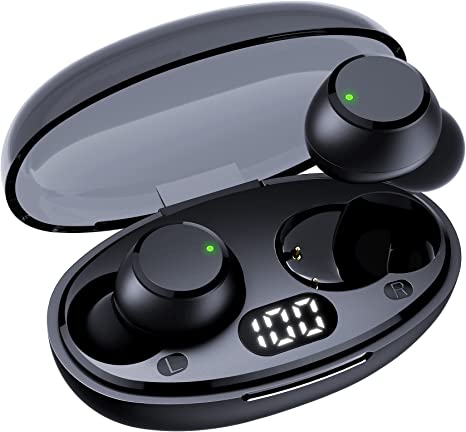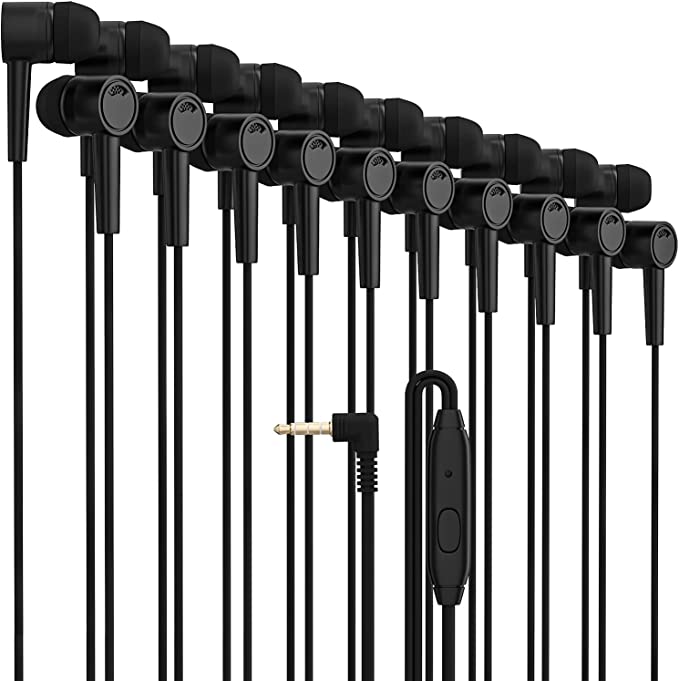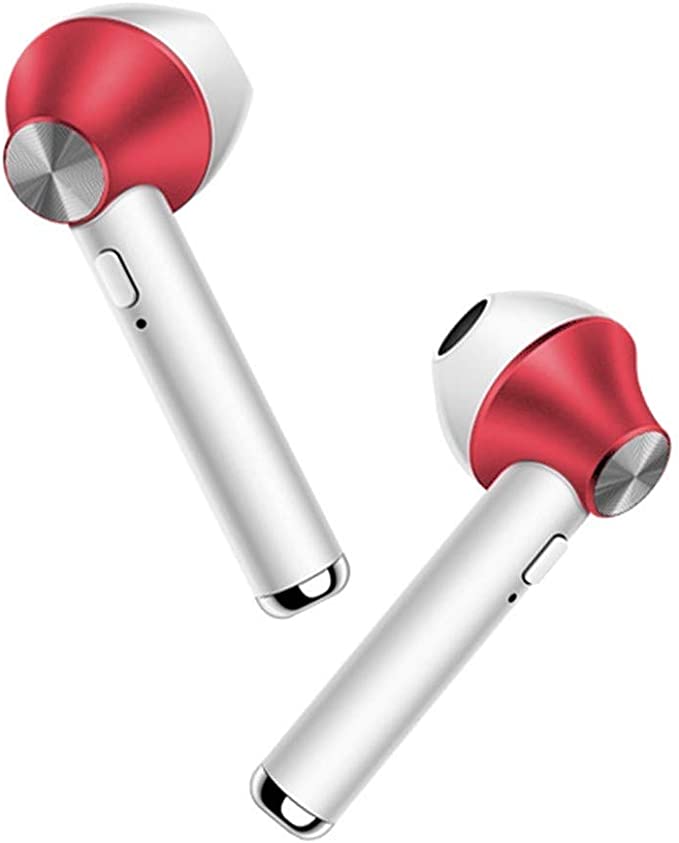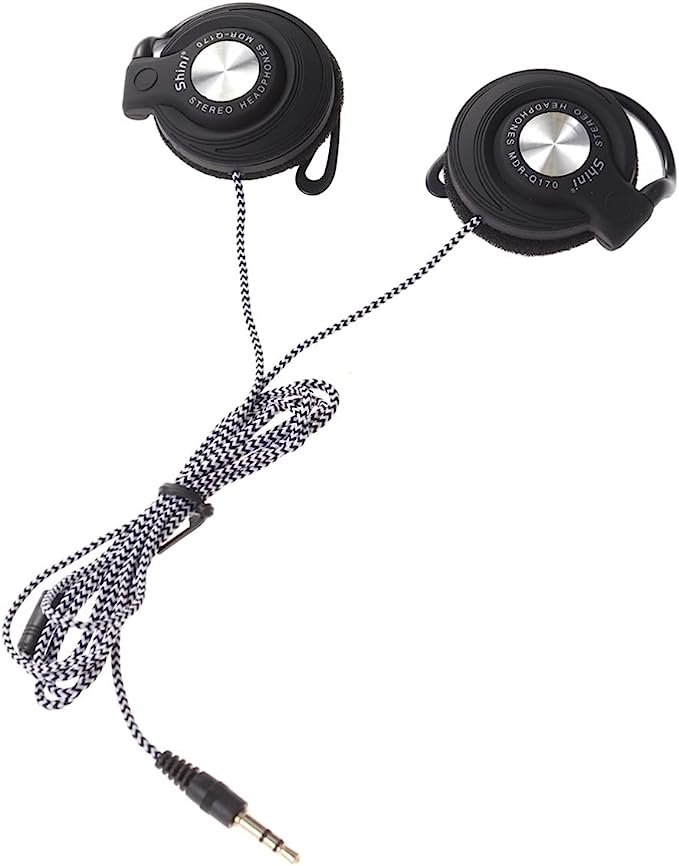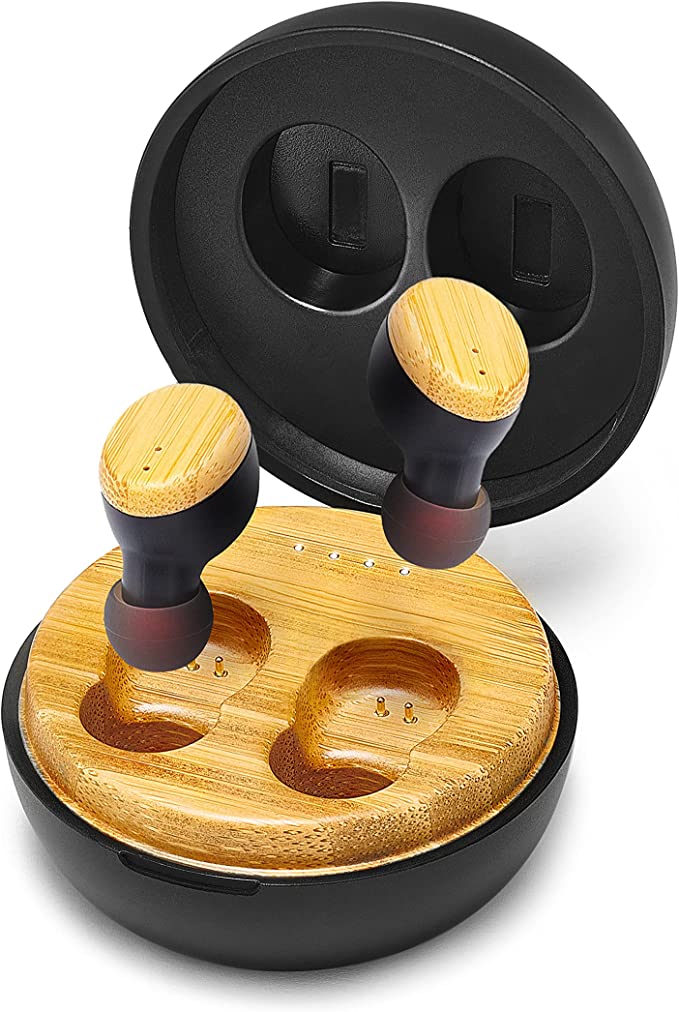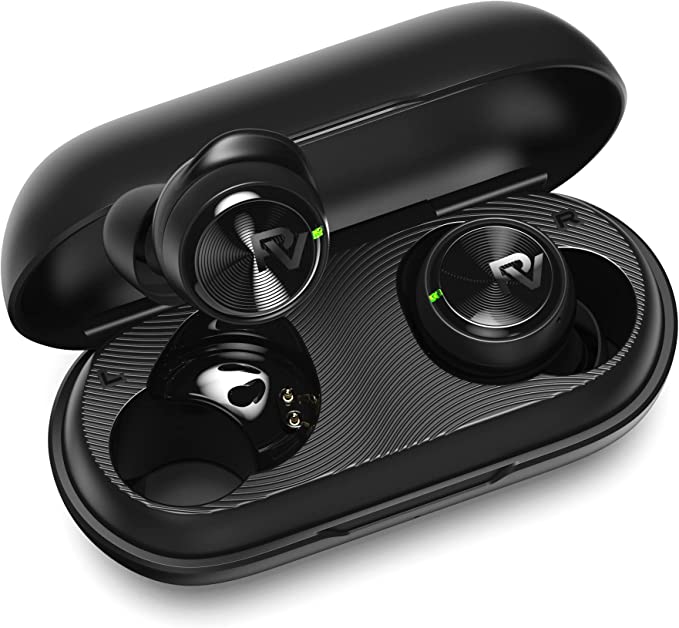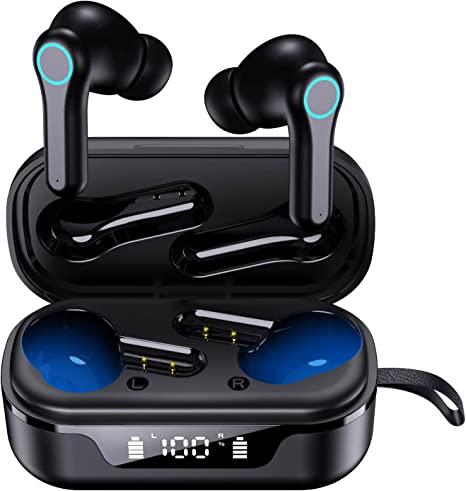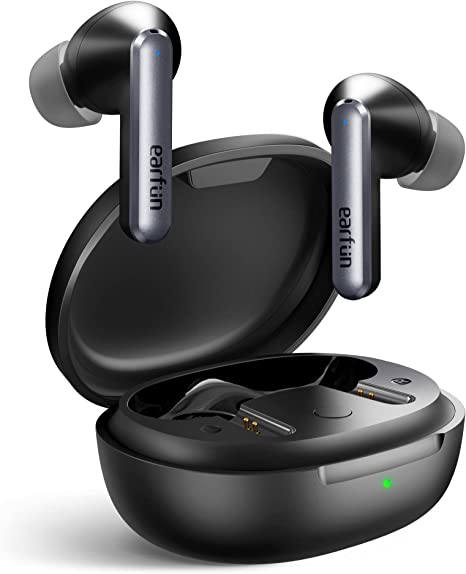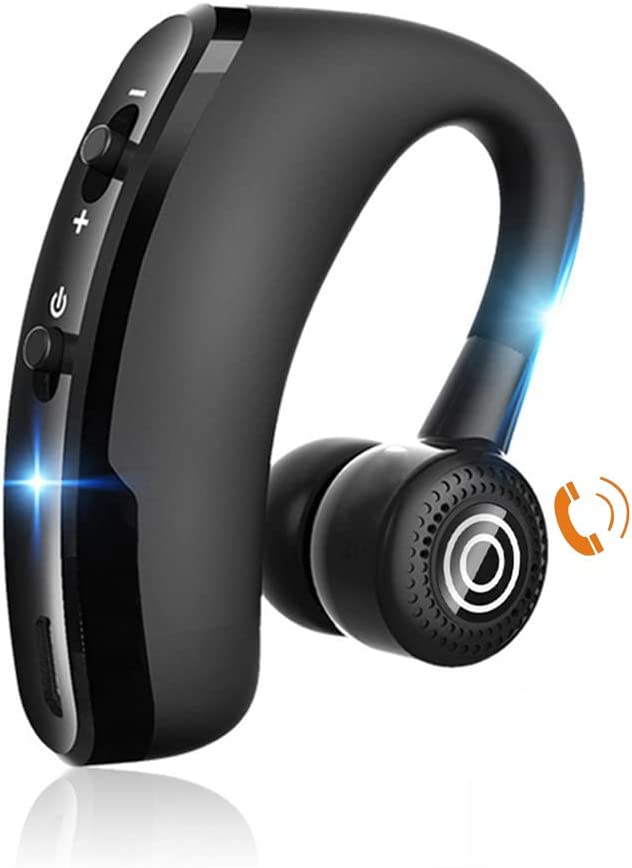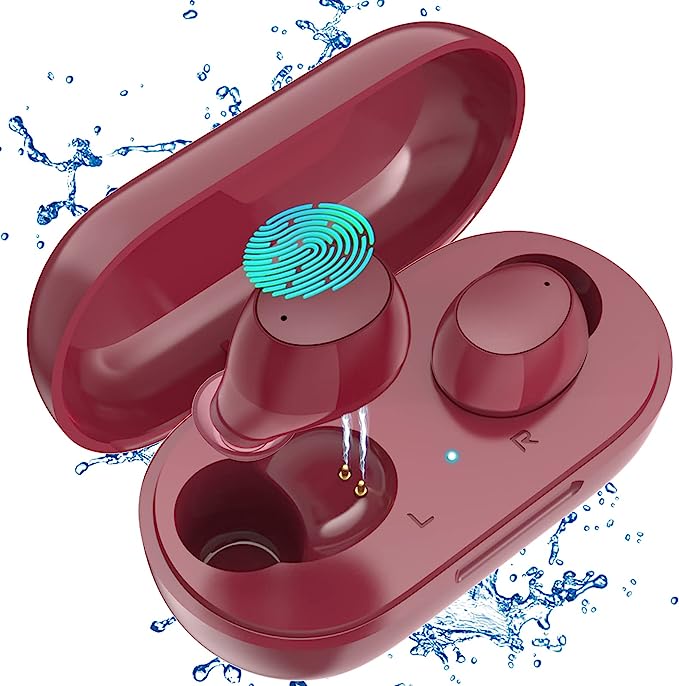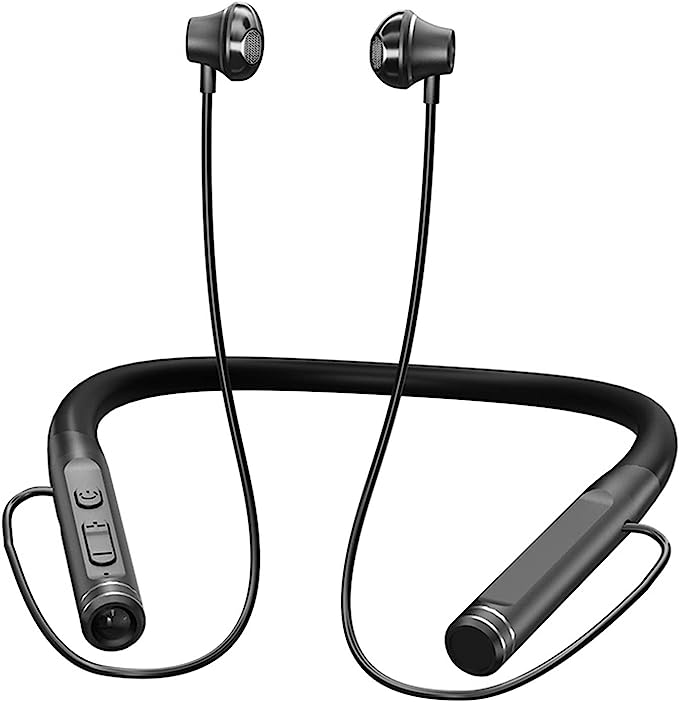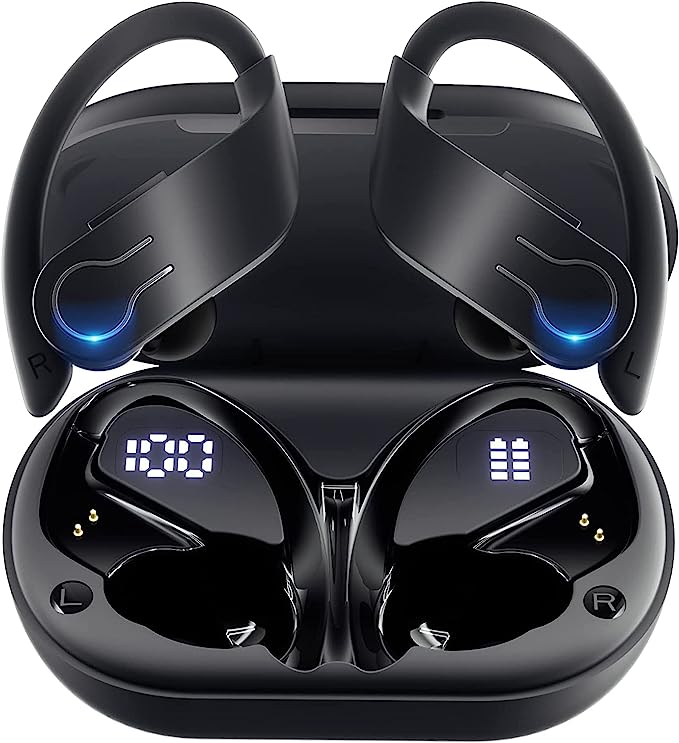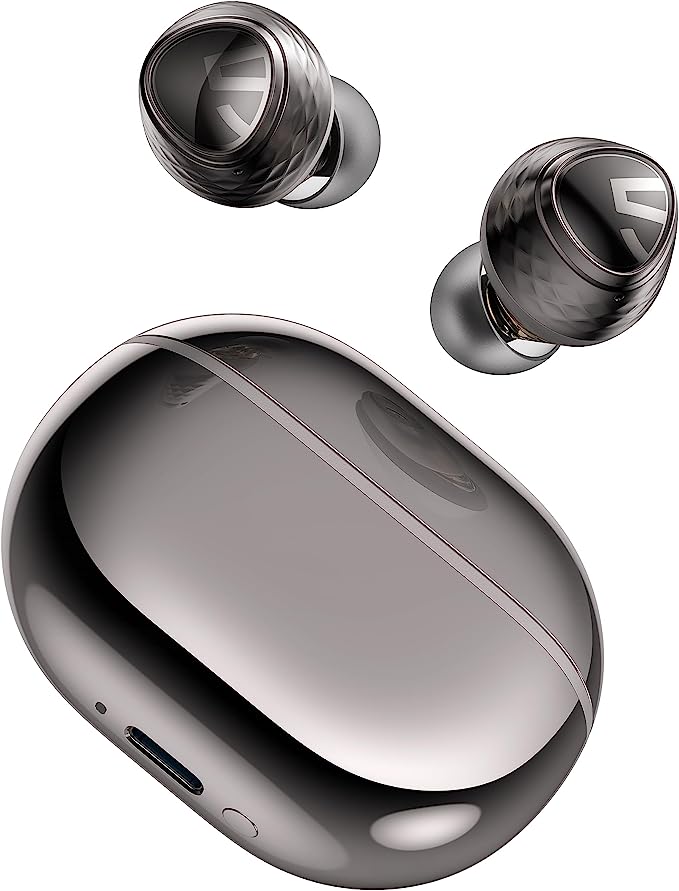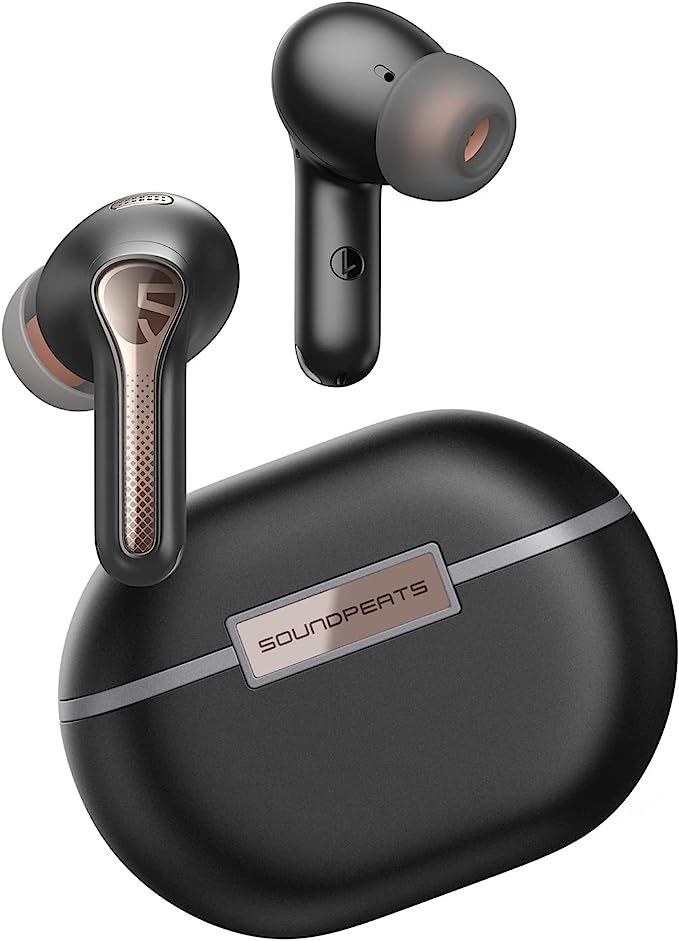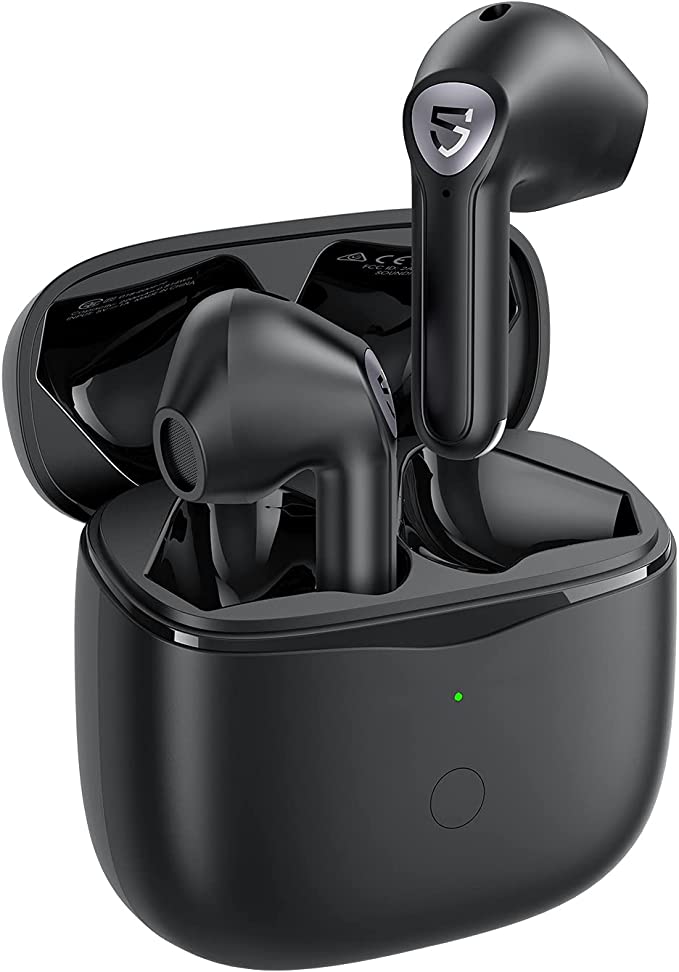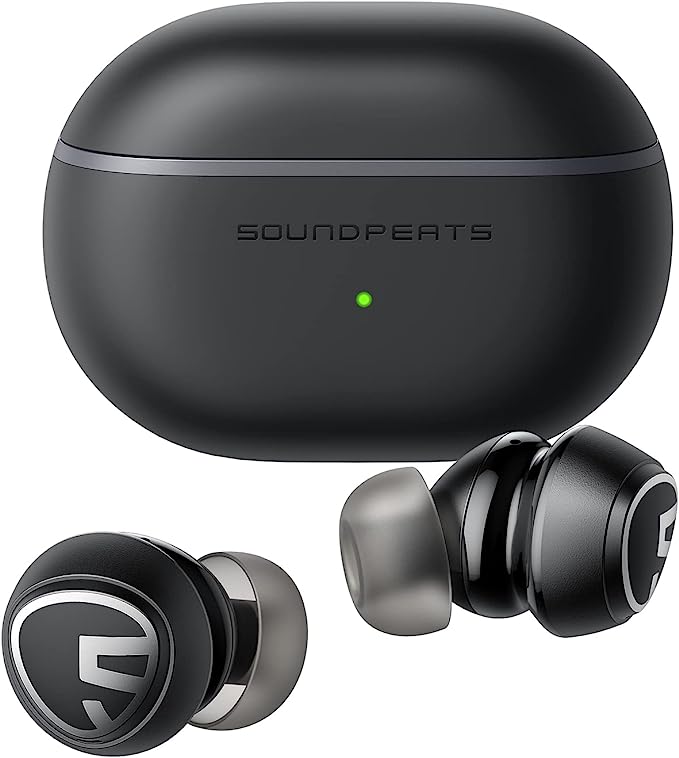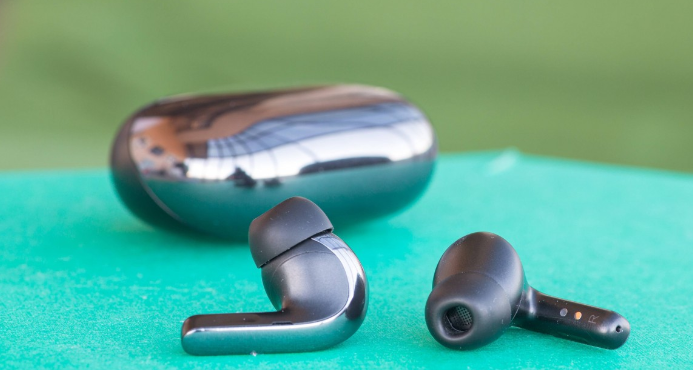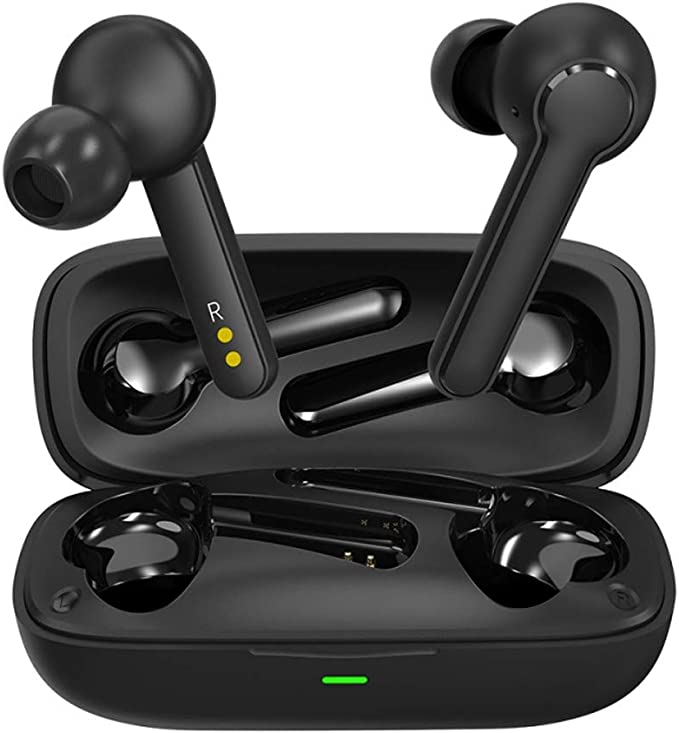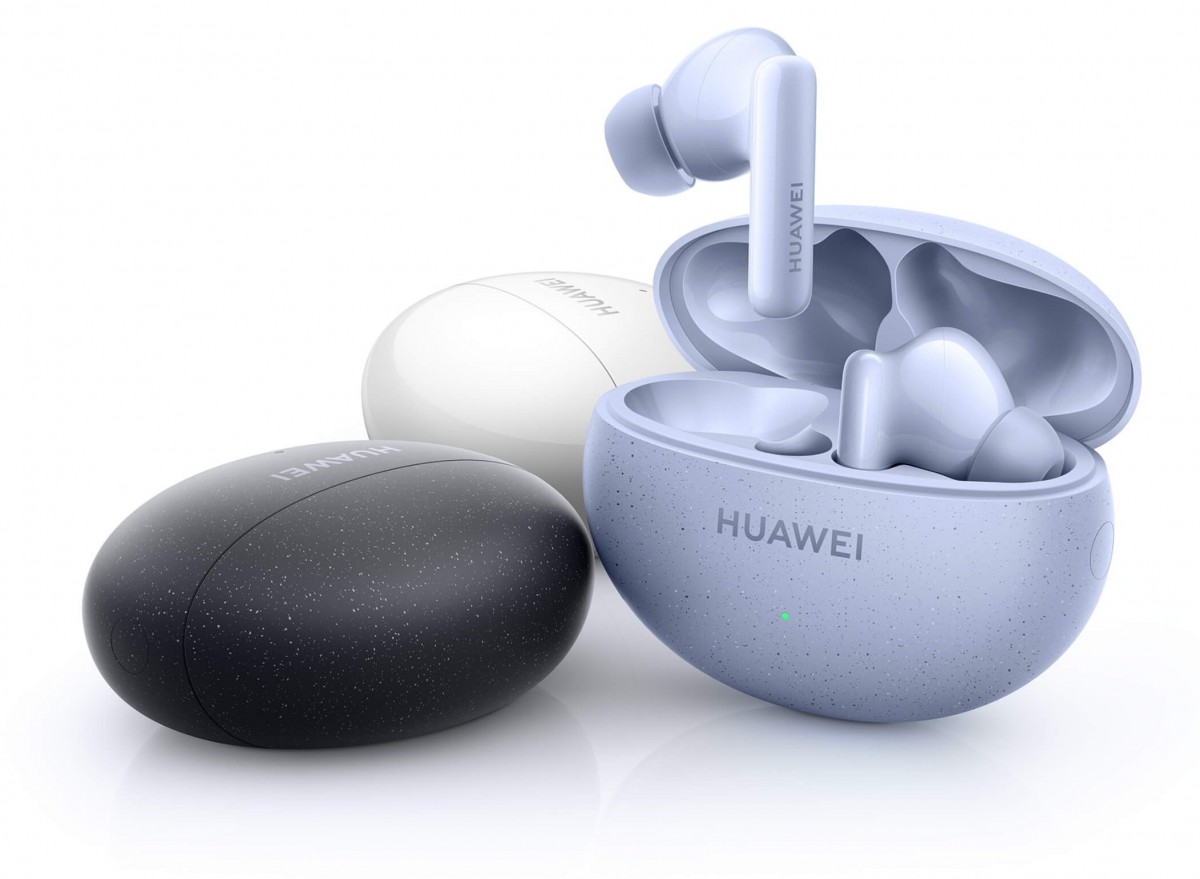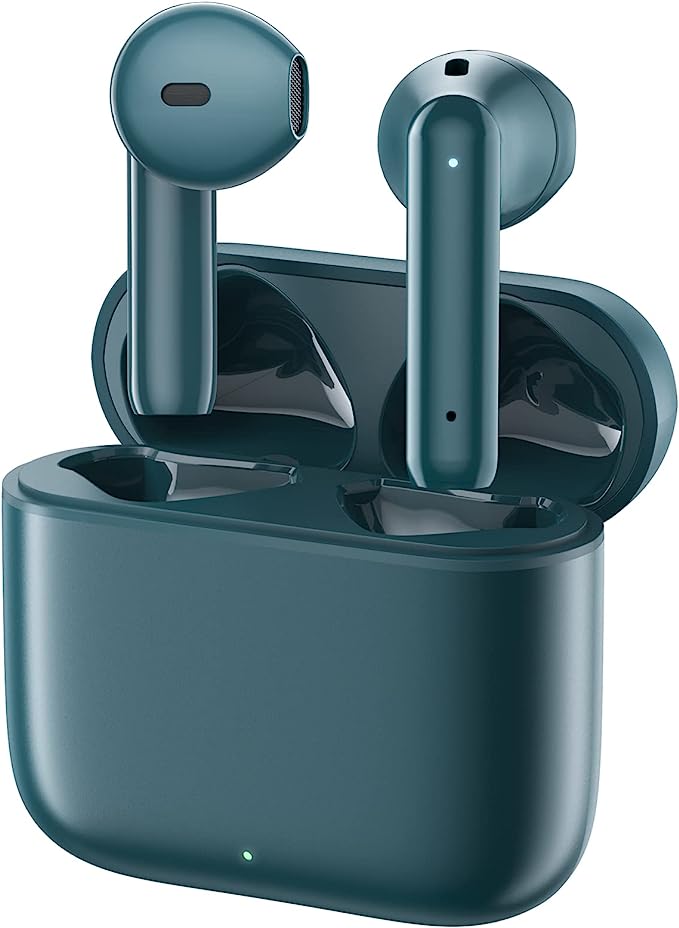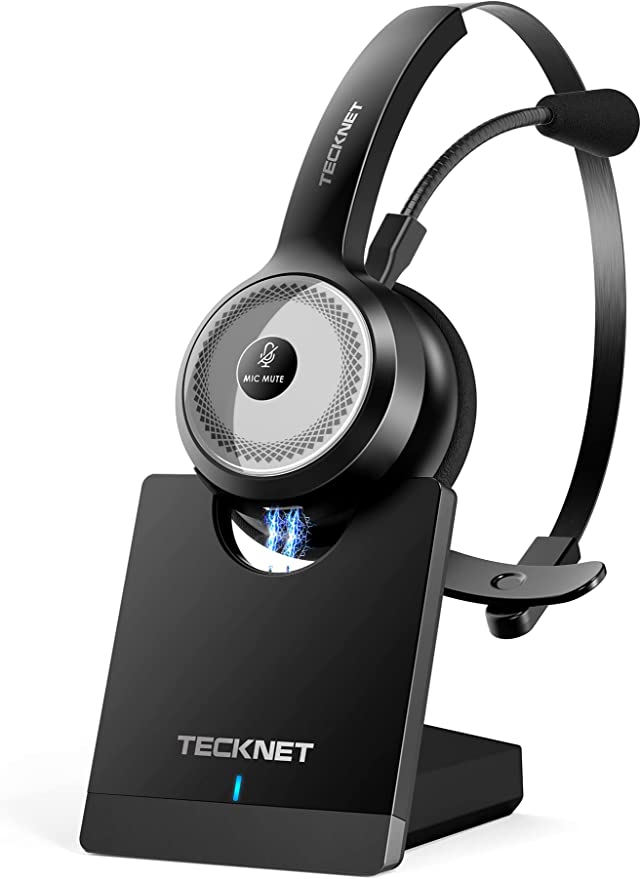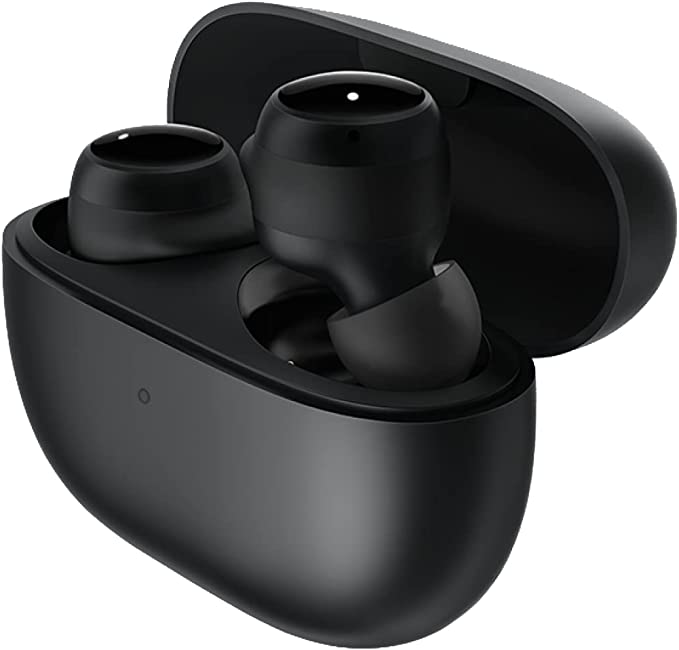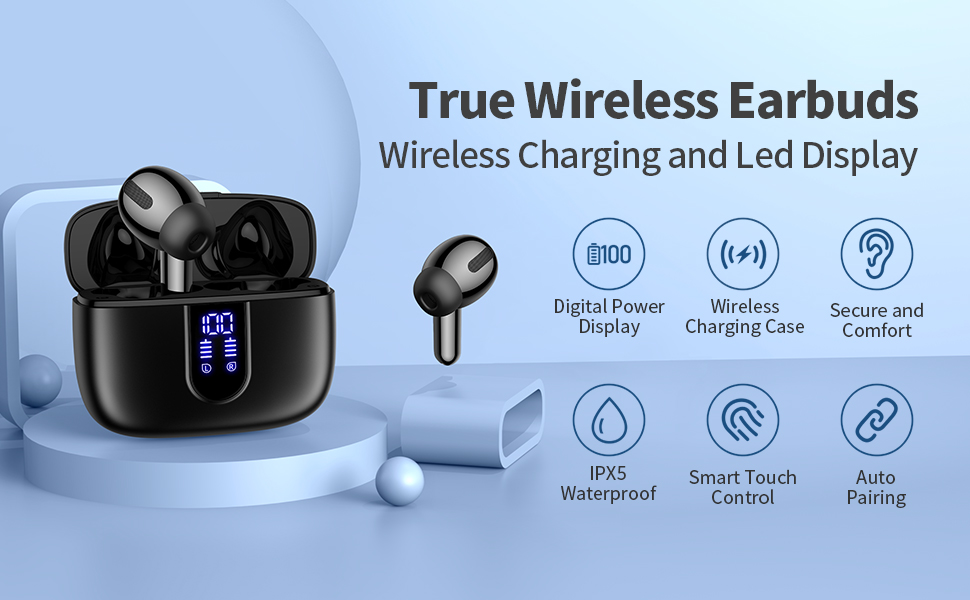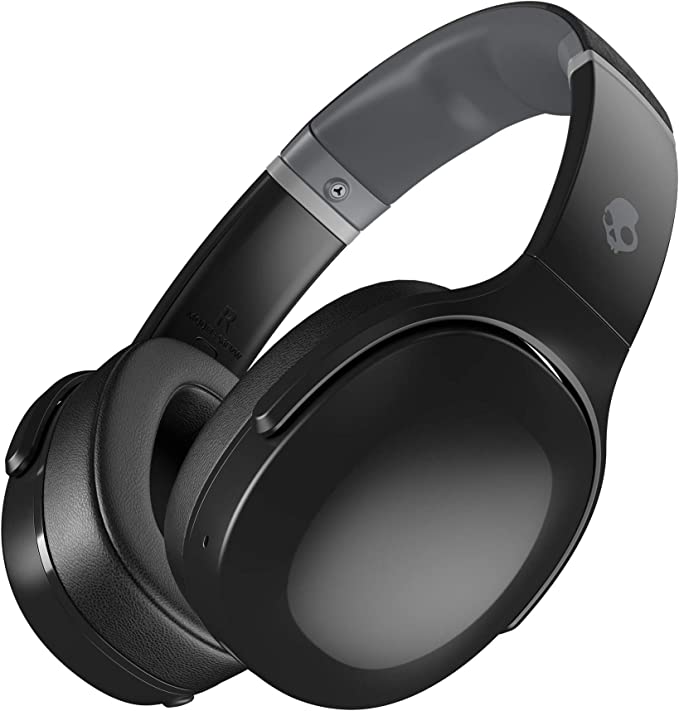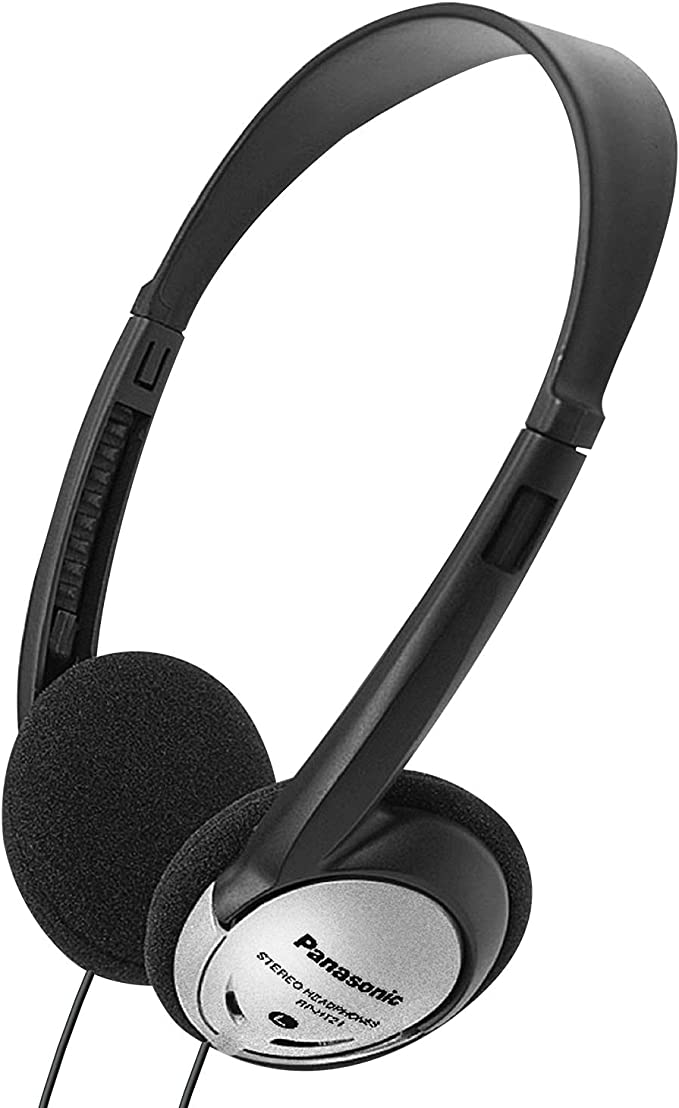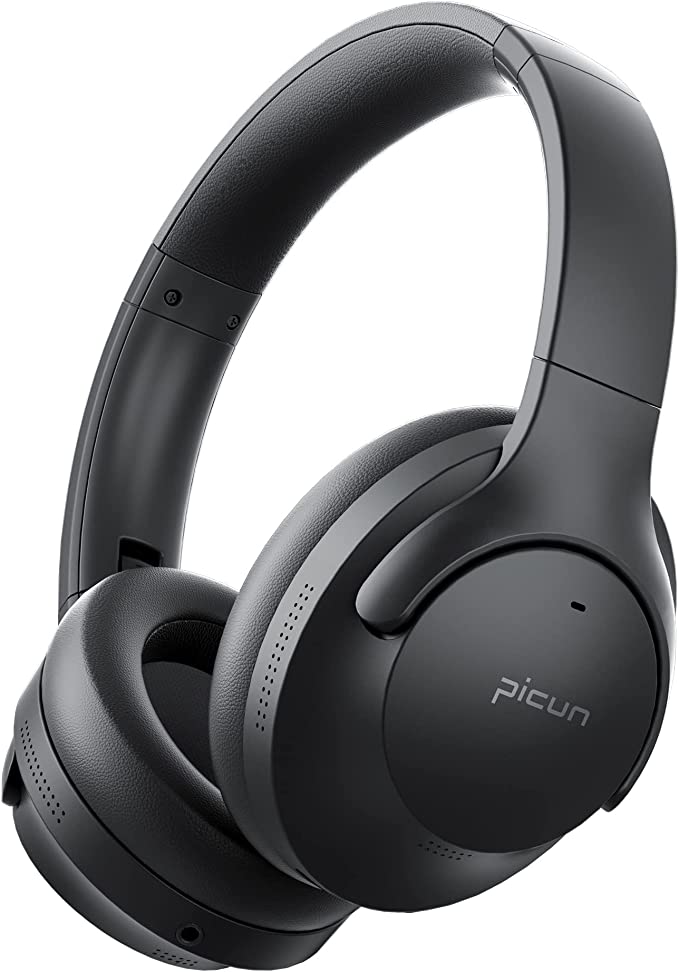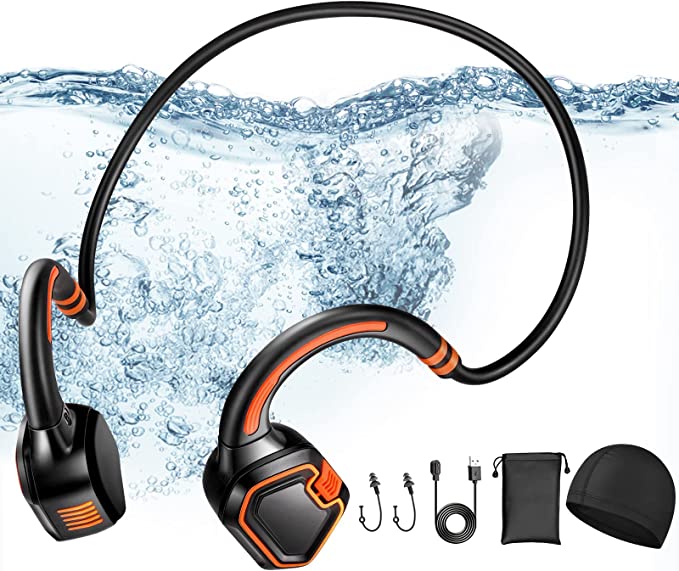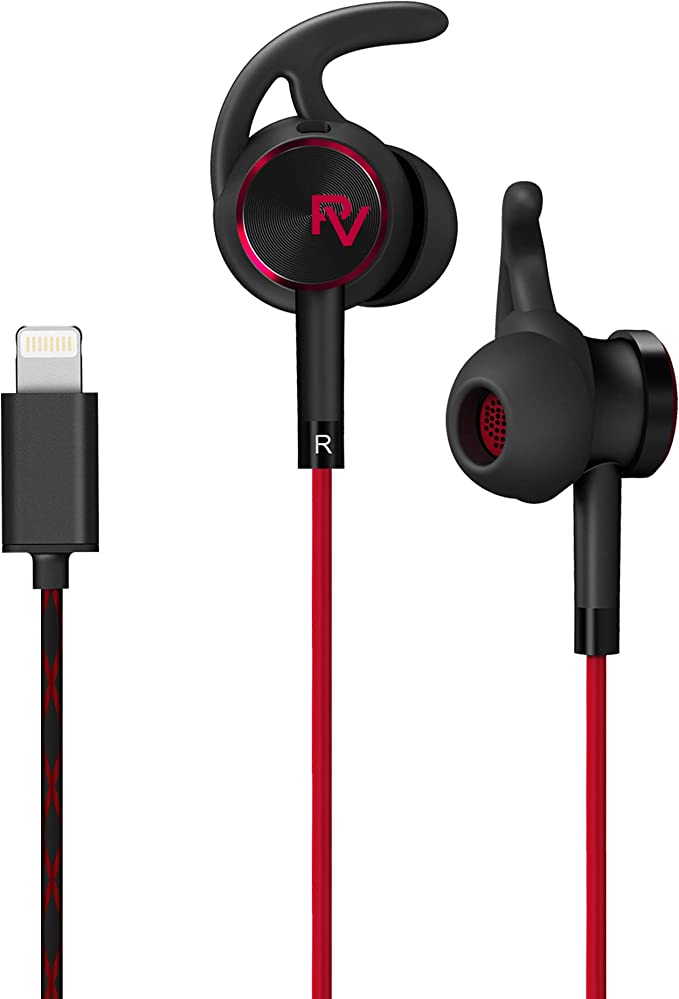Soundcore Space A40: The Science of Silence & How Adaptive ANC Creates Your Personal Oasis
Update on April 13, 2025, 4:11 p.m.
Our modern world is rarely silent. It hums, it rumbles, it chatters. From the roar of the subway carrying us to work, the constant drone of HVAC systems in open-plan offices, to the cacophony of city streets bleeding through our windows, unwanted sound is an ever-present companion. This constant barrage isn’t just annoying; it frays our nerves, shatters our focus, and leaves us yearning for a pocket of peace, a personal oasis of quiet. But in this noisy landscape, can we truly reclaim control over our auditory environment? Technology, specifically Active Noise Cancellation (ANC), offers a compelling answer. Let’s delve into the science behind how devices like the Soundcore by Anker Space A40 wireless earbuds leverage these principles to carve out that much-needed personal space.

The Acoustic Alchemy: Cancelling Noise on Your Commute
Imagine yourself on a morning train or settling in for a long flight. The dominant sound isn’t usually sharp or sudden, but a persistent, low-frequency drone – the engine’s rumble, the tracks’ vibration, the airflow’s whoosh. This is precisely the kind of noise that ANC technology excels at combating. But how does it perform this seeming magic?
Think of sound traveling through the air like ripples spreading across a pond. These ripples, or sound waves, have peaks and troughs (amplitude) and a certain rhythm (frequency). Active Noise Cancellation doesn’t just physically block these waves like a traditional earplug would (that’s passive noise isolation, and a good ear tip seal is still important!). Instead, it actively neutralizes them using a fascinating principle of physics: destructive interference.
Here’s the essence of it:
1. Listening In: Tiny microphones positioned on the outside of the Space A40 earbuds act like vigilant sentinels, constantly sampling the ambient noise waves hitting them.
2. Calculating the Counter-Wave: Inside the earbuds, a sophisticated digital signal processor (DSP) instantly analyzes these incoming waves. Its crucial task is to generate a new sound wave – an “anti-noise” signal. This anti-noise wave is meticulously crafted to be the mirror image of the unwanted sound: it has the same amplitude but the exact opposite phase. Picture it as creating a wave whose peaks perfectly align with the original noise wave’s troughs, and vice-versa.
3. The Act of Cancellation: The earbuds’ internal speakers then play this anti-noise signal directly into your ear canal at the precise moment the original external noise arrives. When these two opposing waves meet, they effectively cancel each other out. The peak of one fills the trough of the other, resulting in… relative silence.
This process is incredibly effective against consistent, low-frequency sounds like those found on trains and planes. The Soundcore Space A40 claims its upgraded system can achieve up to 98% noise reduction under specific conditions (it’s important to note this is manufacturer data, and real-world effectiveness varies with noise type, fit, and frequency). While not absolute silence, the significant reduction transforms a tiring drone into a much more manageable hum, allowing you to relax, read, or simply exist without being sonically overwhelmed. And for those long journeys, the Space A40’s impressive battery life – a claimed 10 hours on the buds alone (likely less with ANC active; some users report around 8 hours) and a total of 50 hours with the charging case – becomes not just a convenience, but a necessity.

The Adaptive Shield: Finding Focus in the Dynamic Office
Now, let’s shift scenes to the modern workplace – often an open-plan environment buzzing with varied sounds: colleagues’ conversations, keyboard clatter, ringing phones, the whirring of shared printers. Unlike the steady drone of transit, this soundscape is dynamic and less predictable. A simple, static level of ANC might be too much in quiet moments, creating an isolating or even slightly unnatural feeling, or not enough when chatter erupts nearby.
This is where the “Adaptive” aspect of the Space A40’s ANC comes into play. Instead of you manually toggling between noise cancellation levels, the earbuds aim to do the thinking for you. Those same external microphones aren’t just listening for noise; they’re constantly analyzing the type and intensity of the surrounding sound. The internal processor then intelligently adjusts the level of noise cancellation automatically.
Imagine stepping away from your relatively quiet desk into a busy hallway conversation, or the office AC suddenly kicking into high gear. The Adaptive ANC is designed to detect these shifts and subtly ramp up or down the cancellation effect. The goal is to provide the right amount of quiet for focus, without making you feel completely cut off or experiencing the slight “ear pressure” sensation some people report with overly aggressive, static ANC systems. It’s about creating a responsive shield, tailoring the silence to the situation.
Of course, the effectiveness of any adaptive system depends on the sophistication of its algorithms – how accurately it identifies different noise sources and how smoothly it transitions between levels. While the exact inner workings are proprietary, the concept represents a significant step towards more natural and less intrusive noise management. Supporting this focus is the physical design. For ANC to work optimally, a good acoustic seal is vital. The Space A40’s lightweight build and inclusion of five ear tip sizes (XS to XL) are crucial not just for comfort during long work sessions, but for maximizing both passive isolation (blocking noise physically) and the effectiveness of the active cancellation working in tandem.
The Listener’s Reward: Unlocking Detail in Your Audio
Silence, or near-silence, is often the goal, but it also serves another purpose: creating a clean canvas for the sounds you do want to hear. Whether it’s immersing yourself in music, catching every word of a podcast, or enjoying the sound design of a movie, reducing background noise allows details to emerge.
The Space A40 aims to deliver on this front with its double-layer diaphragm drivers. In simple terms, the diaphragm is the part of the speaker inside the earbud that vibrates to create sound. Using a composite structure (often combining materials with different properties, like stiffness and flexibility) can potentially allow the driver to reproduce a wider range of frequencies more accurately. The goal is often to achieve clearer highs, well-defined mids (where vocals typically sit), and impactful bass without one overpowering the others. User feedback suggests the default tuning might be quite balanced, perhaps requiring a boost via the EQ for those who crave very deep bass, but generally offering good clarity.
For listeners seeking even higher fidelity (and who have a compatible device, typically Android 8.0 or newer), the Space A40 supports LDAC. Think of Bluetooth audio codecs like pipes carrying digital audio information from your phone to your earbuds. Standard codecs like SBC and AAC are like relatively narrow pipes – they get the job done, but some audio data gets compressed or discarded along the way. LDAC is like a significantly wider pipe, capable of transmitting roughly three times more data. This allows for Hi-Res Audio Wireless, meaning more of the original recording’s detail and nuance can theoretically reach your ears, resulting in a richer, more textured sound.

However, this higher quality comes with trade-offs. LDAC typically consumes more battery power. And, crucially for some users, on the Space A40 (as with many earbuds), enabling LDAC disables the multipoint connection feature. You have to choose between the highest potential audio quality or the convenience of being connected to two devices simultaneously. The Soundcore app offers tools to tailor the sound further, including preset and custom EQs, and HearID, which attempts to create a personalized sound profile based on a quick hearing test – a nod to the fact that everyone’s hearing, and preferences, are unique.
Seamless Transitions: Navigating Between Worlds
Life isn’t lived solely in a bubble of silence or immersed in music. We need to interact with the world around us. The Space A40 facilitates this with Transparency Mode. By using the external microphones to pick up ambient sounds and play them back into your ears, it allows you to hear announcements, traffic, or have a quick conversation without removing the earbuds. There’s even a “Vocal Mode” which likely emphasizes frequencies typical of human speech. While some user reviews mention that Transparency Mode might not sound perfectly natural (sometimes described as slightly “tinny” or artificial – a common challenge for this technology), it offers undeniable convenience.
Connectivity is handled by Bluetooth 5.2, offering potentially improved efficiency and stability. The Multipoint connection is a standout feature for multitaskers, allowing the earbuds to be paired with, say, a laptop and a phone at the same time. You can be listening to music on your laptop, and if a call comes in on your phone, the earbuds can switch over automatically (or with a simple tap, depending on implementation). As noted, this convenience is forfeited if you prioritize LDAC.
Call quality is another area where multiple technologies converge. The Space A40 utilizes six microphones combined with what Soundcore describes as AI-enhanced algorithms. The idea is to use beamforming techniques (focusing the microphones on your voice) and noise reduction algorithms to separate your speech from background noise, making you clearer to the person on the other end. While this is the goal, real-world call quality in noisy environments remains a challenge for many true wireless earbuds, and some user feedback suggests the Space A40 performs adequately but perhaps not exceptionally in this regard compared to premium competitors.
Beyond the Specs: Control, Comfort, and Your Sonic Domain
Ultimately, the Soundcore Space A40 represents an intricate balancing act. It aims to deliver powerful, adaptive noise cancellation, the potential for high-resolution audio, exceptional battery life, and long-wearing comfort, all within a specific price bracket. Technologies like Adaptive ANC and LDAC push the boundaries of what’s expected at this level, while features like multipoint connection, wireless charging, and comprehensive app customization add layers of convenience.
The science involved – from the wave physics of noise cancellation to the digital encoding of audio and the ergonomic design for human ears – is complex. Yet, the goal is simple: to grant you, the listener, a greater degree of control over your personal soundscape. It’s about the ability to dial down the world’s clamor when you need focus or rest, to immerse yourself fully in the richness of sound when you choose, and to seamlessly reconnect with your surroundings when required. While no single device is perfect, and trade-offs exist (like the LDAC/Multipoint choice, or potentially average call quality), the Space A40 showcases how audio technology continues to evolve, offering increasingly sophisticated tools to help us navigate and shape our sonic experience in an ever-noisier world. And perhaps, take a moment to remember the importance of protecting our hearing – even with ANC allowing lower listening volumes, moderation remains key. The power to control sound is remarkable; using it wisely is essential.


